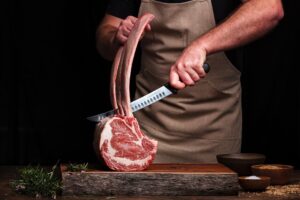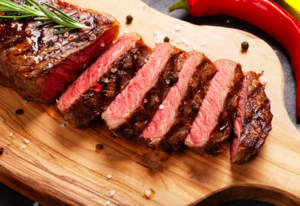You may sometimes see a category of “Heritage Pork” in butcher shops but I guess most of the customers do not really know what it is. There is no clear definition for it but we have done some research for you. Let’s dive in!
Table of Contents
What is Heritage Pork?
Heritage Pork is pork that comes from traditional breeds of pig which may have hundreds of years of history. They usually have some specific traits that have been selected to adapt to the conditions of their specific area over many generations. And the traits make them distinct. Berkshire, Duroc, Iberian, Tamworth are some famous heritage pork breeds.
Why Is Heritage Pork Better In Taste?
Nowadays, pork from factory farms account for a substantial part of U.S. pork production. Yet, they are less tasty—pale, dry and bland when compared to heritage pork. This is because the meat of factory-farmed pigs are very lean, the meat will be dry and lacking flavor after cooking due to the low amount of fat.
On the other hand, heritage pork is usually marbled with a great deal of fat which makes it more moist, tender and flavorful, resulting in a much more delicious meat.
Why Is Heritage Pork So Expensive?
Most commercial pork is raised in confinement settings which is also called Concentrated Animal Feeding Operations (CAFOs). Nearly all pigs that grow in CAFO never enjoy sunshine or fresh air in their whole life. In a lifetime, they only stay in narrow crates where they cannot walk or turn around, or are slaughtered in slaughterhouses.
If the sows are pregnant, they will be transferred to the third place, an equally small crate to give birth and breastfeed their piggies. Once the piglets are weaned, they will be brought back to the original tiny crate and repeat this cycle endlessly until they die.
Moreover, CAFO porks are usually fed or injected with antibiotics. The idea is to use antibiotics to keep the pigs healthy since they are living in an overcrowded and intensive environment.
Contrarily, heritage pigs grow on pasture freely but not in confinement. Heritage pork lives under sunshine, they graze and breathe fresh air everyday. The pigs including pregnant sows are free to root, roam, wallow, and forage. And fewer or even zero antibiotics are used in heritage pork farms. As a result, they are happier and healthier but also more expensive due to the great cost.
Additionally, the extraordinary genes of heritage pork produce high quality meat which is also one of the reasons why they are pricey.
5 Heritage Pork Breeds That Are Worth To Try!
1. Berkshire Pig (England)
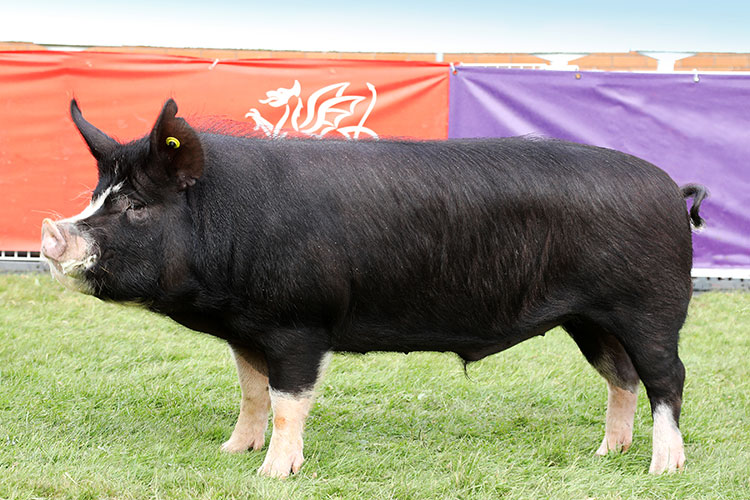
Berkshire pig has a long history originating from England for 300 years. It is easy to identify this famous heritage pork breed by their black hair with six white markings on their hooves, snout and tip of tail.
Gourmets’ eyes will be twinkled when they hear the name of Berkshire as the meat of Berkshire pig is pink in color with an awesome marbling. The rich marbling is the magic code which delivers an incredibly juicy and tender mouthfeel with a mild sweetness to pork chops. It will melt in your mouth just like what premium Wagyu beef does.
Berkshire pork was imported to the United States in the early 1800s. It improved the quality of general pork in the U.S. when breed crossing. There is an organization called the American Berkshire Association which is to ensure the Berkshire pig is not completely diluted. This shows how precious Berkshire pig is.
2. Tamworth Pig (England)
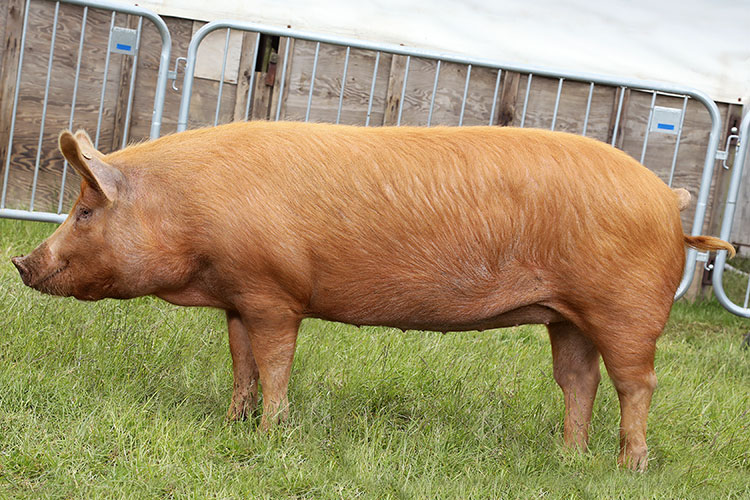
The name of Tamworth Pig came from the village with the same name in Staffordshire, England. They were brought to Canada in 1877 and the U.S. a few years later.
Tamworth pig is pale ginger to dark mahogany red thanks to their beautiful bristle. Their bristles are dense which protect them from ultraviolet harm from the sun. When they moult, the Tamworths will seek shade and a large amount of mud coating to prevent sunburn. The coating is to help them cool down as well since pigs cannot sweat. The snout, neck and legs of Tamworth pigs are long while their ears are upright.
This heritage pork breed is characterised by its strong resistance to harsh weather. They can live well even in Scotland and Canada where winters are severe with extremely cold and strong winds. What’s more, they are right for forest grazing and compatible with cattle. Thus, Tamworth pigs are popular among pig farmers.
They are born to live outdoors but not in confinement, and this is also why Tamworth pork is extra-lean, muscular, firm with a hint of marbling.
3. Hampshire Pig (England / Scotland)
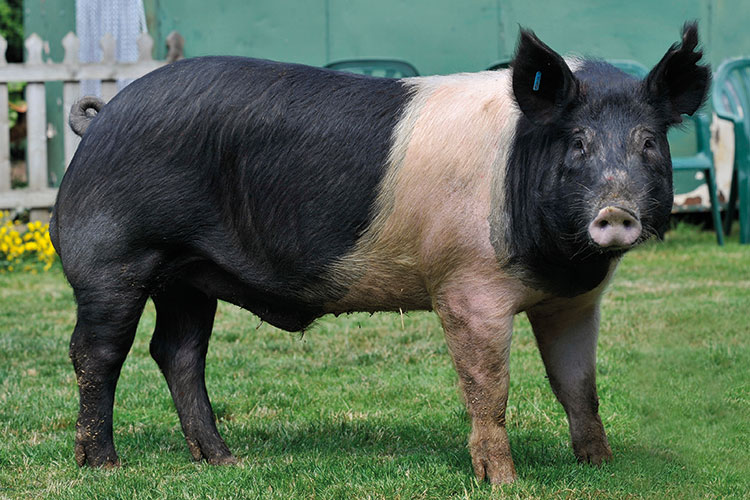
Hampshire Pig probably is the oldest pig breed in America. It originates from Northern England and Scotland that was introduced to America in the 1800s. You can recognize Hampshires at a glance, they are black with a white band at the shoulder covering the front legs.
Most heritage pork breeds are renowned for fatty meat while Hampshire pigs produce lean meat with a bit of marbling. They are muscular and lean with a small amount of back fat. Moreover, Hampshire pigs are docile, grow fast, as well as have an excellent feed-to-meat conversion rate and thus the pig farmers love them.
4. Duroc Pig (U.S.)

Duroc Pig was produced by hog breeders from New York and New Jersey by breeding mixes of many commercial pigs in the early 1800s. It is said that this old heritage pork breed was named after a stallion or a race horse which was named after Gen. Christoph Duroc, Napoleon’s Aide…
The old Duroc was very large while it is now medium in size. The modern Duroc pig is the product of crosses of the Jersey Red and older Duroc since 1850. Thanks to its quick muscle growth and super-efficient conversion of feed to meat, it is popular all over the world.
Duroc pig is reddish-brown to light golden with a pair of drooping ears. They are large-framed, muscular and lean but also have a nice marbling that provides brimful of flavor to the meat.
Click here to buy Duroc Pork. And apply our unique 10% discount code: KitchenTeller on the Basket page or the Payment page during checkout!
5. Mangalica Pig (Hungary)
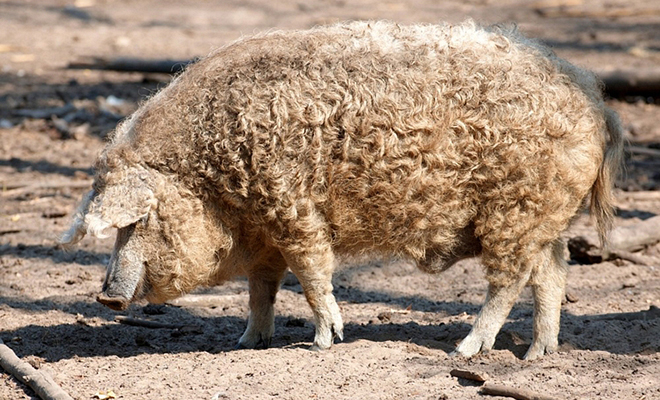
Mangalica, or Mangalitsa, pig is a kind of lard pig that comes from Hungary. It was developed in the 19th century and it quickly became popular throughout Europe. 65-70% of the Mangalica carcass is fat which makes it one of the fattiest pig breeds in the world. The high content of fat provides a creamy, juicy, tender texture to the meat and so some people call the Mangalica pork as “Kobe beef of pork”. Yet, most of the lard is unsaturated fat (including omega-3 fatty acids) and this means it has a lower melting point and is beneficial to health when compared to regular pork.
This Hungarian heritage pork looks distinctively with sheep-like bushy and curly hair. You can find them in Hungary as sausage and salami while the Spanish producers typically use it for ham. Choose the whole Mangalica ham if you are crazy about it; but if this is your first try, opt for sliced ham!
Summary
As mentioned in the above, heritage pork is raised in a much healthier and more humane manner for pigs but also provides unbelievably luscious meat to you. Just like what we said, farming these traditional breeds requires higher cost and the farmers cannot sustainably breed them if the market demand is low. Consequently, these old-fashioned pigs will disappear forever.
So buying heritage pork can help preserve the breeds. Supporting humane animal husbandry as well as breed conservation and meanwhile enjoying the high quality pork. Why not?!
► Read More: 6 Best Pig Breeds For Meat Around The World
► Read More: 8 Types of Ham You Must Try! | Shopping Tips for Newbies in Ham


